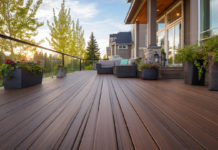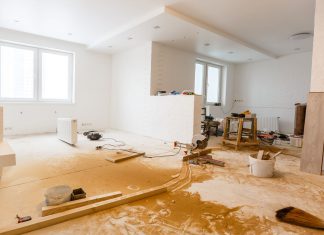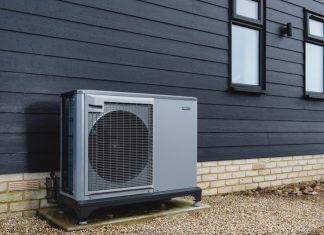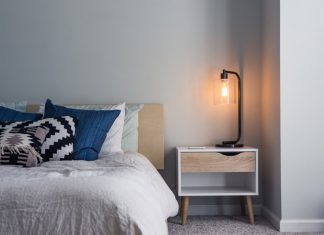Being a paralysed individual can make life particularly hard so, in this article, we’re going to talk about seven home adaptations that can improve the wellbeing of paralysed individuals. Read on to find out more.
One situation that will be glaringly obvious to people with disabilities is that getting around in the average home is not a simple task. With stairs and narrow doorways taking precedent in many houses, a physical disability can change how you think. This is why home modifications are particularly useful for those who’ve acquired a disability.
Of course, home modifications can be considerably expensive. This is why things like spinal cord injury compensation can be sought, with the money received going towards things like making adaptations to your home.
This can be extremely important to improve a disabled person’s wellbeing. So, to find out the seven home adaptations needed for paralysed individuals and why they can improve their wellbeing, keep on reading.
How Do Home Modifications Improve the Wellbeing of Paralysed Individuals?
If you are a paralysed individual, or a parent, friend, or housemate has recently been in an incident that has caused them to become paralysed, you will notice that life becomes considerably more challenging. Changing the home so that it is more practical can help take away those concerns and allow the person to live an independent life as much as possible. Some ways it can help include:
Sense of Independence and Normality
Not being able to do things that you were once able to do can be frustrating, and that can apply to small things such as making dinner or taking a shower alone. Without a modified home, it can be hard for this to be a possibility, and the paralysed individual might feel like they can only rely on other people. In reality, they probably just want to be able to do things for themselves without anyone’s help.
Having a modified kitchen that is designed specifically for that person means they’ll be able to make their own food like once before, and it can give them a sense of normality. Again, a modified bathroom and open shower means that they will be able to take showers alone without needing assistance from someone else.
Peace of Mind
It is possible for some paralysed individuals to be able to walk again after their incident, such as for those who’ve experienced a spinal cord injury. If there are instalments in the home that can prompt them, such as handrails, it can provide peace of mind as it offers support when needed.
What Modifications Can Be Done to Make the Home More Accessible?
1. Paved Walkway or Driveway
Being paralysed often means the need for a wheelchair. So, a helpful adaptation to your home if you have gravel or another type of inconvenient paving or driveway, is to redo it with pavement so the wheelchair can easily move and not get stuck.
2. Replacing Carpet with Tile, Wooden or Laminate Flooring
As well as needing to access the front of the home with a paved driveway, there is also the need to move around inside of the property. If carpet was the flooring prior to the paralysis incident, this likely wouldn’t be practical moving forward, especially when a wheelchair is needed for everyday use. Instead, changing this to tile, wood or laminate flooring will be easier to move across.
3. Adding Ramps
Many homes have different levels throughout them. It could be a step into the kitchen, a door frame that needs to be stepped over to get into, or a step into the front or back door.
Having a ramp installed will aid in making independent living more feasible and assist in creating easy access to all parts of the home.
4. Widening Doorways
Most doorways in the home are not designed for wheelchair users, and make it very impractical if you need the assistance of one. By widening the doorways, it means that access to multiple rooms in the home is possible. It means the ability to pass through doors with complete ease and comfort, without the concern of not having enough room or getting stuck.
If widening the doorway isn’t possible, taking the door off instead can also provide more room, and it costs considerably less. Able Access UK can provide further information on widening doorways specifically for wheelchair users to fit through.
5. Stairlift
For those people who are unable to have a bedroom on the ground floor, installing an electric stairlift will provide easy access to the upstairs of the home.
Stairlift Guru has provided a list of the best 2021 stairlift companies to find the perfect one for your home. They can also help with the process of purchasing a stairlift for the home.
6. Roll-In Shower or Wet Room
Being able to shower is a necessity that we often take for granted in life. Being faced with an injury that paralyses you can make wash time complex.
That is why we would recommend investing in a roll in shower or a wet room. They provide additional space, which standard showers do not. You can roll your wheelchair into it with ease, and freely be able to manoeuvre the wheelchair around.
SpinalCord.com have further bathroom tips available for those suffering from a spinal cord injury. These tips are both to do with home modifications and how you can help recovery to improve your injury.
7. Handrails
It’s easy to forget about the importance of handrails if you are using a wheelchair on a regular basis. But, for certain things like transferring to the toilet or a chair, it can provide further assistance and allow an extent of independence. It is also great for those trying to learn to walk again, as it provides reassurance that they can have support should they need it.
Home Modifications Can Make a Difference
As you can see, there are many modifications that can be done to your home to make it more practical for the use of a wheelchair. But, what is often forgotten is the difference it can make to a paralysed person’s wellbeing. These changes can assist in them living as normal a life as possible, and aid their recovery process.
Have you had an accident that has meant you needed to adapt your home? What has been the most helpful? Leave a comment below.
Please be advised that this article is for general informational purposes only, and should not be used as a substitute for advice from a trained medical professional. Be sure to consult a medical professional or healthcare provider if you’re seeking medical advice, diagnoses, or treatment. We are not liable for risks or issues associated with using or acting upon the information on this site.















